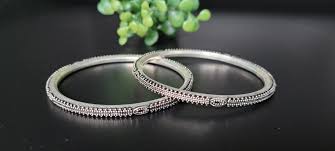All about antique jewellery

All about antique jewellery
Antique jewellery has played an important role in human history, serving as a symbol of wealth, status, and cultural identity. From simple beads and shells to intricate gold and gemstone pieces, jewellery has been used for adornment, religious rituals, and even as currency. In this article, we will explore the history of antique jewellery, its materials and techniques, and its significance in different cultures throughout history.
Jewellery has been a part of human history since prehistoric times. The first known jewellery pieces were made of natural materials such as animal teeth, bones, and shells. As humans evolved, so did their jewellery, with the discovery of precious metals and gemstones leading to more elaborate and ornate designs.
In ancient times, jewellery played a vital role in social, religious, and cultural practices. It was often used as a symbol of wealth, status, and power, and was frequently worn by rulers and nobles as a way to display their wealth and authority.


Materials and Techniques
A. Metals
Metals were one of the earliest materials used to make jewellery. In ancient times, gold was highly prized for its rarity and beauty. It was often used to make elaborate necklaces, bracelets, and earrings, as well as decorative objects such as cups and bowls. Silver and bronze were also used for jewellery, although they were less expensive than gold.
B. Gemstones
Gemstones have been used in jewellery for thousands of years. Some of the most popular gemstones in ancient times included lapis lazuli, turquoise, and carnelian. These stones were often used to make beads, pendants, and other decorative objects.


Techniques
Various techniques were used to create antique jewellery. Some of the most common techniques included:
- Casting: This involved pouring molten metal into a mold to create a specific shape.
- Hammering: Metals were often hammered into shape using a hammer and anvil.
- Filigree: This technique involved twisting and weaving thin metal wires to create delicate patterns.
- Engraving: Designs were often etched into metal using a sharp tool.
- Stone Setting: Gemstones were set into metal settings to create intricate designs.
Significance in Different Cultures
A. Ancient Egypt
Jewellery played an important role in ancient Egyptian culture. It was often used as a symbol of social status and was frequently worn by both men and women. Gold was particularly prized, and many jewellery pieces were adorned with precious gemstones. Popular designs included collars, bracelets, and earrings, as well as elaborate headdresses worn by pharaohs.
B. Ancient Greece and Rome
In ancient Greece and Rome, jewellery was often used to display wealth and status. The most popular materials were gold and silver, and jewellery was often adorned with gemstones and pearls. Many pieces were also decorated with intricate patterns and designs. In ancient Rome, jewellery was also used as a symbol of political power, with emperors often wearing ornate pieces to display their authority.
C. Ancient China
In ancient China, jewellery was often used as a symbol of social status and was frequently worn by both men and women. Jade was particularly prized, and many jewellery pieces were adorned with this precious stone. Popular designs included bracelets, necklaces, and earrings, as well as elaborate hair ornaments worn by women.
D. Ancient India
In ancient India, jewellery was often used for religious and cultural purposes. Gold was particularly prized, and many antique jewellery pieces were adorned with precious gemstones. Popular designs included necklaces, bracelets, and earrings, as well as intricate headpieces worn by women. In Hindu culture, jewellery was also used to ward off evil spirits and bring good luck.
Conclusion
In conclusion, antique jewellery played than just a decorative role in human history. It served as a symbol of wealth, status, power, and cultural identity in different societies and civilizations. From the earliest use of natural materials to the discovery of precious metals and gemstones, antique jewellery has undergone various transformations in terms of materials, techniques, and designs. The significance of jewellery in ancient times is evident in the archaeological evidence and the rich cultural traditions that have survived to this day.
In addition to its ornamental value, antique jewellery also has cultural, historical, and artistic significance. The intricate designs and techniques used in its creation reflect the skills and creativity of ancient artisans. The materials and motifs used in jewellery also provide insights into the trade routes, cultural exchanges, and religious practices of ancient societies.
In modern times, antique jewellery continues to inspire contemporary designs and has become a popular area of study for archaeologists, historians, and art enthusiasts. Its timeless beauty and cultural significance make it a fascinating subject of exploration and appreciation.




